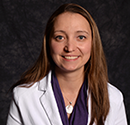Only a few short months ago, a new virus in China seemed isolated and far away, and plans were ongoing for national and international meetings, surgical skills training camps and external fellowship and training opportunities.
With recent cancellations of ophthalmology meetings, global ophthalmology training missions and training observerships, the learning process seems to have come to a halt. Or has it?
Changing Access in a Changing World
Trainees all over the world face a similar dilemma which requires a creative solution. As the world braces for the COVID-19 pandemic, and striving to abide by the “stay home, stay safe” mantra to lower the morbidity and mortality of this viral illness, educators have to find innovative ways to provide trainees and patients with the needed resources in real time, even when internet access may not be reliable.
The rapid adaptation of existing technology meant to support primary nonemergent patient care and clinical instruction is paramount to continuing a seamless delivery of care while physical distancing is advised.
The following are examples of free technologies being used successfully for both clinical and teaching applications. This includes real-time, audio-video consultation and teaching, recorded lessons, and secure messaging for asynchronous communication.
Doctor-to-Doctor Consults
Doximity has a HIPAA secure messaging platform for Doctor-to-Doctor communications.
WhatsApp offers secure messaging and free calls on smartphones. This is a secure way to get live doctor-to-doctor consultation, or use the store and forward method by sending patient cases to a consultant for a review with a subsequent reply. Although not HIPAA-compliant, during the COVID-19 pandemic, federal officials have temporarily allowed telehealth video communications on the WhatsApp platform.
Lectures, Wet Lab, Practice Modules
CyberSight through Orbis gives local eye care teams virtual access to: artificial intelligence technology for rapid detection of certain diseases, clinical training, live lectures and surgical demonstrations from the Flying Eye Hospital, and on-demand advice for complex patient cases. Emory University adapted this for a virtual wet lab curriculum: an annual, five-week cataract surgery course that includes residents’ wet lab assignment videos uploaded to CyberSight and graded by Emory faculty. This model is replicated in other countries around the world.
The Academy features simulated learning courses on the ONE® Network that allow residents to practice their surgical skills online.
Virtual Grand Rounds
Zoom Video Conferencing. Despite multiple security bugs, this platform went from 10 million daily meeting participants in December 2019 to now 200 million participants in March 2020. It’s widespread use is bolstered by the ease of screen-sharing, audio and video connection and its wide availability on computers, tablets and smartphones. The free account allows hosting up to 100 participants, unlimited one-on-one meetings and 40-minute time limit on groups. Example: Moran Eye Center Zoom Grand Rounds streaming live or recorded is one way to utilize this technology.
Alternatives include Microsoft Teams (via Skype) which works on Windows and Mac or Amazon Chime and Doxy.me for smaller groups.
Collaborative Curriculum Development
Google Classroom. Prior to COVID-19, the Global Ophthalmology fellows relied on in-person teaching. But now that travel is at a halt, they must come up with alternative exchange strategies. Current Moran fellow Sophia Ying Fang is using this resource to interact with residents in Haiti, Ghana and Ethiopia.
There are many alternatives, some with powerful remote learning platforms based on “spaced education,” which encourages retention by presenting and repeating information over a period of time. For this you might use Qstream.
Whatever app you use, here are some pearls for success:
- Use the telehealth resource that is most secure for the type of communication. (Remember, that federal officials have waived the requirement that communications be HIPAA-compliant, but it’s temporary during the COVID-19 pandemic.)
- Confirm that clinician or trainee has access to the internet at the time consult is needed.
- Test out the connection and user interface beforehand (download the app and try connecting).
- Have a backup plan available.
- Get quick feedback about the quality of the interaction/connection/session to determine if changes are needed.
- Assess the limitations of the technology for desired future consultations.
Although face-to-face meetings are limited in the foreseeable future, these technologies need to be adapted to provide a virtual alternative to large meetings where idea exchanges happen.
 |
|
About the author: Anya Gushchin, MD, is an ophthalmologist in Chicago. She serves on the Academy’s YO International Subcommittee.
|